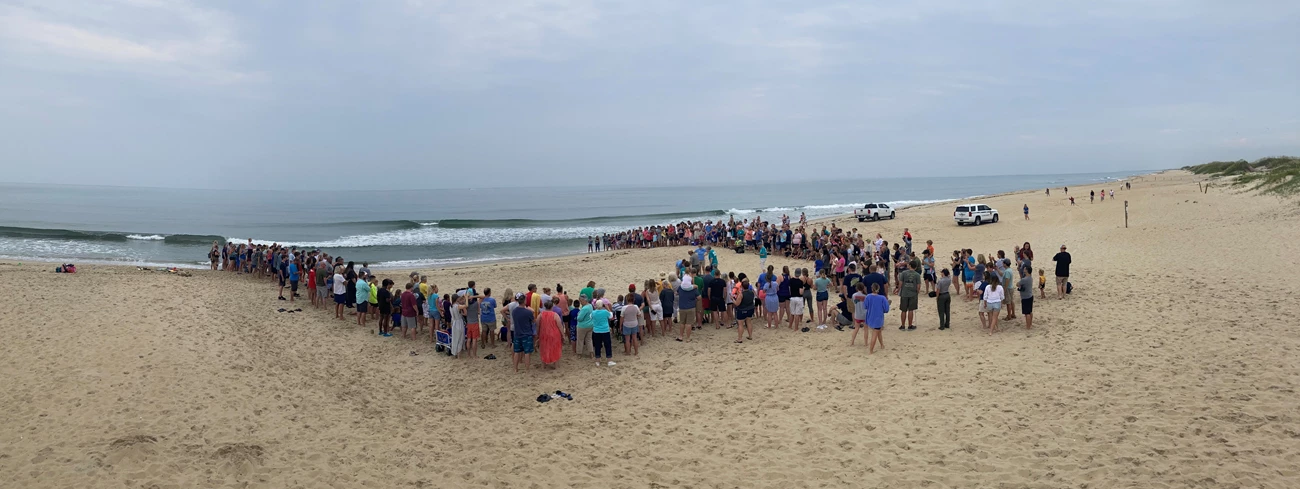Public Sea Turtle Nest ExcavationsCome watch science in action!

NPS Photo
Every spring and summer, female sea turtles—like loggerheads, greens, Kemp’s ridleys, and sometimes leatherbacks and hawksbills—come to the shores of Cape Hatteras National Seashore to lay their eggs. About two months later, typically in the darkness of night, up to 150 hatchlings emerge from each deep sandy nest and quickly make their way across the beach to the safety of the Atlantic Ocean. During August and September, visitors to Cape Hatteras National Seashore can watch as biologists dig up nests that have recently hatched. This process is called an "excavation," where the biologists check what’s left in the nest after the turtles have hatched. Biologists will document what remains in the nest after a natural hatch has occurred for research. They count the empty eggshells, collect unhatched eggs, and sometimes find live or dead hatchlings. While this is happening, a park ranger will talk about sea turtles and explain what the biologists have found. Nest excavations are an important way for the National Park Service to collect valuable data on sea turtle hatch and emergence success rates. This data is added to the turtle nesting databases for the Seashore and the State of North Carolina. Every summer at the end of hatching season, our park biologists venture to the beach to perform nest excavations. 
NPS Photo Scheduled Public Nest ExcavationsFor currently scheduled sea turtle nest excavations see additional details below.Check back on this page for future sea turtle hatchling releases or follow our social media pages for announcements (Facebook, Instagram) Due to the unpredictability of sea turtle hatchings, notice of these excavation programs will usually occur only one day in advace, so check back often. DATE/TIME: Sunday, August 10, 2025 at 9:00am (Please allow for extra time to walk to the nest, as the excavation will begin promptly at 9:00am) WHERE TO PARK: Ocracoke Island Airport, 1731 Irvin Garrish Hwy NEST LOCATION: Walk down off-road vehicle ramp 70 towards the beach. On the beach, walk north (left) for approximately 500 feet. Nest Excavation Dates Can be Hard to PredictOnce eggs are laid, incubation of the eggs can take anywhere from 50 to 60 days depending on the species of sea turtles. When the hatching of a nest begins, it can take up to five days before the nest is ready to be excavated.Just like with human babies, each nest found is given an appoximate "due date," but it really comes down to the turtles -- if they will be ready on time, early, or even a little late. Know Before You Go!
The requested video is no longer available.
The requested video is no longer available.
|
Last updated: August 8, 2025
